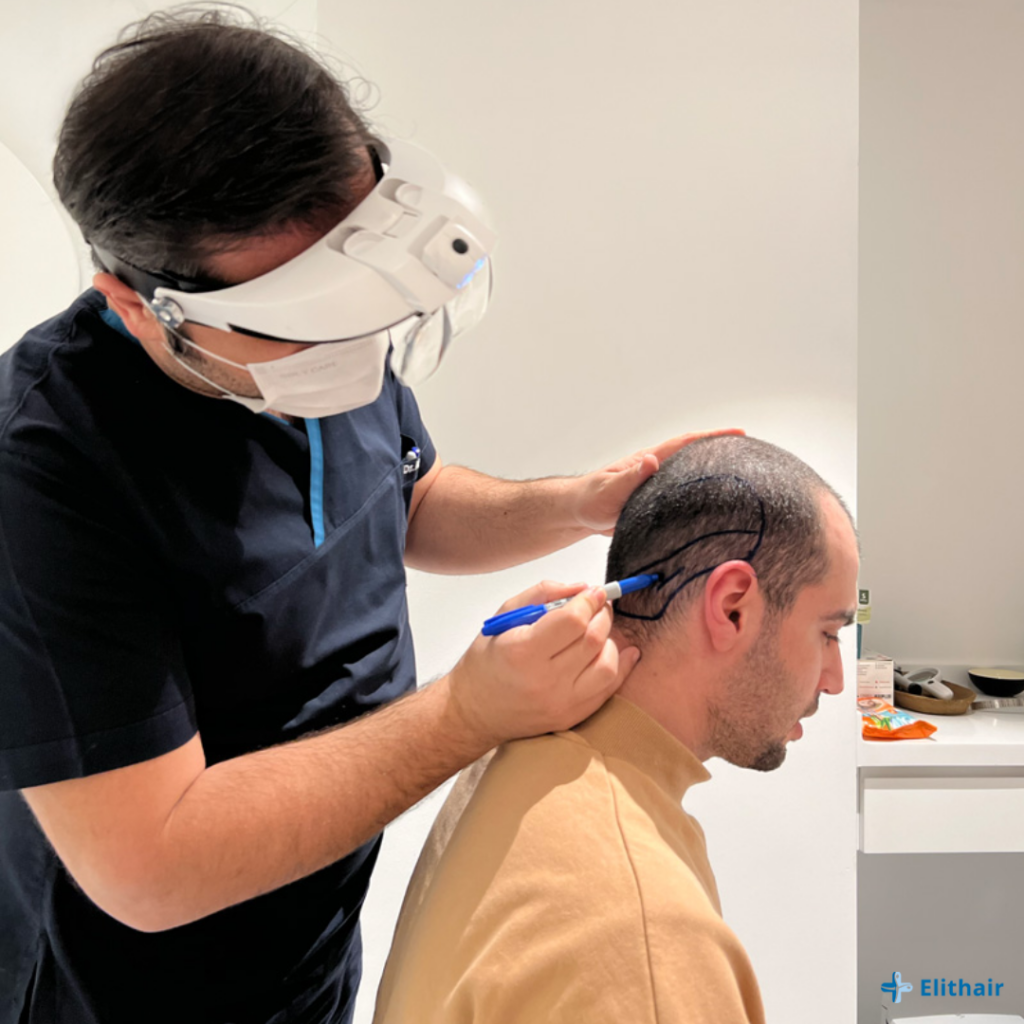
Is a Body Hair Transplant Possible?
One of the common questions we get at Elithair when it comes to hair transplantation is whether body hair can be used for the procedure. While it is technically possible and performed by some surgeons, our experts do not recommend it in order to get the best results. Here we will go through the advantages and disadvantages of a body hair transplant, as well as who it may be applicable for.
Who is Suitable for a Body Hair Transplant?
With a body hair transplant, the availability of donor hair for the patient and surgeon expands. However, to be successful, the body hair chosen needs to resemble the scalp hair. This is in order for the characteristics to merge seamlessly, from the curl to the colour and coarseness. This means the available pool for donor hairs may not be as large as you think.
Additionally, not every area of body hair may be suitable for extraction. The majority of hair on the human body is vellus hair. This means it is too soft and light for this hair transplant technique. On the other hand, hair on the chest, back, and beard which develop during puberty are known as terminal hairs which are sturdy enough to be extracted.
Factors that can affect body hair suitability
If the patient is on medications like DHT blockers, it can have a negative impact on the donor body hair. As a result of these preventative measures, there can be thinning or hair loss on your body hair. For that reason, compatibility needs to be confirmed first, and the extraction can be very difficult to perform.
What is the Procedure Like for a Body Hair Transplant?
Similarities to Regular FUE

In many ways, the procedure for a body hair transplant is very similar to a regular FUE hair transplant from the scalp. The donor area is shaved and anaesthetic is administered. The grafts are loosened using a special hollow needle with a micromotor.
Hair follicles are removed using a special tweezers in a gentle and precise treatment. There is a high level of precision that is required as the grafts are removed individually and set aside for the implantation.
Differences to Regular FUE
With body grafts, the length and depth can vary depending on the part of the body. As the structure of the scalp and hair will change in the donor area, the hair surgeon will often need to adjust and change the punch settings on the micromotor in order to make sure the extraction is successful. This means that the extraction is more difficult and time-consuming, meaning not as many grafts can be extracted in a single session.
Body hair groups are frequently found in smaller numbers compared to scalp hair. They more commonly just grow as 1-2 hairs, and multiple grafts will rarely be found in body hair areas. Due to the disparity in the amount of hair required and fewer amounts of hairs available per follicle, this typically increases the cost of the procedure compared to a regular scalp extraction.
Graft treatment
Body hair units also may not be as immediately available to transplant, as they require more attention in the graft storage stage. The hair units will be separated into natural groups and are trimmed, cleaned, straightened out and maintained in a fit-for-purpose nutrient solution.
What are the Pros and Cons of a Body Hair Transplant?
Pros of Body Hair Restoration
As previously discussed, the availability of donor hair can be expanded once body hair is made available to the surgeon. This may be the only option for those who suffer from very advanced grades of androgenetic alopecia on Norwood 6 or 7 where there is insufficient donor hair to fully cover the recipient area.
If multiple restorations have been performed in the past and the scalp donor hair has been exhausted, patients may need to use a number of grafts from their body. Its general thickness makes it suitable for covering scars or filling in areas on the tonsure that require improved density. In cases like with cicatricial alopecia, the scarring can be so severe that the scalp cannot provide enough donor hair for sufficient coverage.
Cons of a Body Hair Transplant Surgery
While body hair can grow much faster than hair found on the head, there are significantly fewer of these hairs that are in the growing stage. 85-90% of hairs on your head are in the anagen phase at any one time, while over 50% on your chest or beard are often in the telogen or resting phase.
This can make it more difficult to ensure the anagen : telogen ratio is optimal for transplantation before the procedure. The availability of donor hair in these areas is much less as well. The typical scalp can have up to 6,000 donor hairs available while the beard has only 1,000 grafts and the chest only between 300 – 1,000 depending on the patient.
Hair shedding after surgery
With a shorter growth stage and longer resting phase, it means that the body hair grows shorter in comparison to scalp hair. If a procedure used only body hair for its donor area, up to 50% of the transplanted hair could fall out at once, given the different growth cycle. This would cause bald patches to reappear after the transplant, producing unnatural results. The likelihood that the hair will start to grow curly post-transplant increases as well, since this is the typical growth pattern of body hair.
It is also not as suitable as donor hair for the hairline as for other recipient areas. This is because the hair is often more firm and rigid than the thinner and softer hairline follicles. The appearance would be very unnatural, and so again a hair transplant procedure solely with body hair would not be possible. With chest hair, the difference in tissue compared to the scalp means that a larger hollow needle is required and micro-scars are more likely to be left behind.
Conclusion
While the possibility of using body hair may seem appealing to those who think they are lacking the sufficient amount of donor hair, it is not always possible to achieve a natural hair appearance, and it can only be used on certain areas of the head. Additionally, with fewer donor hairs available, more difficulty in extraction and more hairs required at a reduced quality, it is not a suitable option for treatment at Elithair.
Are you unsure if you have sufficient donor hair available on your scalp for a hair transplant? Then contact our experts today with pictures of your hair in order to get a free and non-binding analysis of your hair loss situation. We can let you know if you are suitable for the transplantation procedure and provide you with all the information you need for a life with full hair again.
FAQ
What types of body hair are most suitable for transplantation?
The most suitable types of body hair for transplantation are those from the chest, back, and beard, as these are u003ca href=u0022https://en.wikipedia.org/wiki/Terminal_hairu0022 target=u0022_blanku0022 rel=u0022noopeneru0022u003eterminal hairsu003c/au003e which are sturdier and more similar to scalp hair.
What is the success rate of body hair transplants compared to scalp hair transplants?
Body hair transplants have significantly lower success rate due to differences in hair growth cycles and characteristics. This is why Elithair discourages patients from performing this type of surgery. Alternatively a hairpigmentation can be a solution to a bald scalp.
How many grafts can typically be harvested from body hair?
The number of grafts available from body hair varies. The beard can provide about 1,000 grafts, while the chest can yield between 300 to 1,000 grafts, depending on the individual’s hair density.
Can body hair transplants be used to restore hairlines?
Body hair is not suitable for hairline restoration because it is typically coarser and may grow in a different pattern, which almost always result in an unnatural appearance.
Are there any additional risks associated with body hair transplants?
Additional risks include a higher likelihood of scarring in the donor area, mismatched hair texture, and the potential for less effective graft survival compared to conventional scalp hair transplants.


